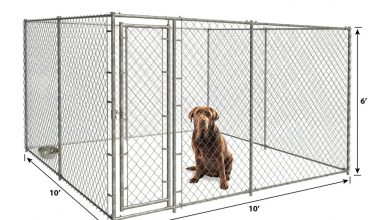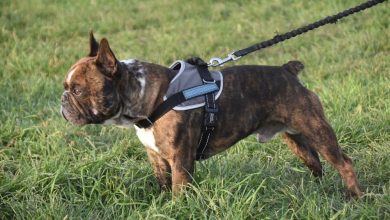Why Does My Dog Go Under My Legs

1. Introduction
Dogs are known for their loyal and loving nature, and often times they will go to great lengths to show us how much they care. One of the most common behaviors that dogs exhibit is going under their owners’ legs. This behavior may be confusing for some owners, as it’s not something that humans typically do. In this article, we will explore why dogs go under their owners’ legs and what it means. We will also look at how to create a safe and comfortable environment for your dog, as well as tips on how to teach them not to go under your legs.
2. Reasons why dogs go under your legs
There are several reasons why a dog may go under their owner’s legs. The first reason is that they may be seeking comfort or security. Dogs are social animals and often seek out the company of their owners when they feel scared or anxious. Going under their owner’s legs can provide them with a sense of safety and security, especially if they have been in a stressful situation or have been separated from their family for a period of time.
Another reason why dogs may go under their owner’s legs is because they are seeking attention. Dogs are highly intelligent animals and can quickly learn how to get the attention of their owners by engaging in certain behaviors, such as going under their legs. They may also be trying to get closer to you in order to receive affection or praise from you.
3. The importance of providing a safe space for your dog
It is important to provide your dog with a safe and comfortable environment where they can relax and feel secure. If your dog is feeling scared or anxious, you should try to create an environment that is calming for them. This can include providing them with plenty of toys, treats, and other items that can help them feel relaxed and secure in their home environment. You should also make sure that there are no loud noises or sudden movements that could startle them or make them feel unsafe.
4. How to create a safe and comfortable environment for your dog
Creating a safe and comfortable environment for your dog starts with providing them with plenty of quality time with you each day. Spend time playing with them, cuddling them, taking them on walks, and training them so that they know what is expected of them in different situations. Additionally, provide your dog with plenty of toys, treats, beds, blankets, and other items that can help keep them entertained when you’re not around or when they need some alone time.
It’s also important to create a quiet space where your dog can retreat if they need some alone time or want to take a nap without being disturbed by other people or animals in the house. This could be an area of the house where there are no loud noises or sudden movements that could startle them or make them feel unsafe.
5. How to teach your dog not to go under your legs
If you find that your dog is frequently going under your legs even when there is no need for comfort or security, then it’s important to teach them not to do this behavior as it could become dangerous if left unchecked over time. To teach your dog not to go under your legs, you should start by providing positive reinforcement whenever they stay away from you instead of going underneath you when you move around the house or yard together. You should also use verbal cues such as “no” or “stop” when they start going towards you instead of away from you so that they learn what behaviors are acceptable and which ones aren’t allowed in different situations.
6. Signs that indicate that your dog is feeling uncomfortable or unsafe
It’s important to be aware of signs that indicate that your dog may be feeling uncomfortable or unsafe in certain situations so that you can take steps to address the issue before it gets worse over time. Some signs include cowering away from people or other animals, excessive barking or whining, hiding behind furniture or other objects, trembling or shaking, refusing food, avoiding eye contact, growling at people or other animals, etc.. If you notice any of these signs in your pet then it’s important to take steps to address the issue so that they don’t continue feeling scared or anxious in certain situations over time.
7 . Tips on how to make sure that your dog feels safe and secure around you
To ensure that your pet feels safe and secure around you there are several things that you can do:
• Provide plenty of quality time – Spend lots of quality time playing with your pet each day so they know they are loved and appreciated
• Give lots of praise – Praise your pet regularly so they know when they are doing something right
• Use positive reinforcement – Use positive reinforcement such as treats when teaching new behaviors so they associate good things with learning new commands
• Create a safe space – Provide a quiet space where your pet can retreat if needed such as an area away from loud noises where no one will bother them
• Be patient – Be patient with teaching new behaviors as it takes time for pets to understand what we expect from them
• Monitor behavior – Monitor behavior closely so any issues can be addressed quickly before becoming worse over time
< h 2 > 8 . Common behaviors that indicate that your dog is feeling anxious or scared < / h 2 >
If you notice any changes in behavior then it may be an indication that something is wrong such as:
• Excessive barking/whining
• Cowering away from people/other animals
• Hiding behind furniture/objects
• Refusing food
• Avoiding eye contact
• Trembling/shaking
• Growling at people/other animals
If you notice any changes in behavior then it’s important to take steps immediately to address the issue before it gets worse over time such as providing comfort/security through positive reinforcement techniques like treats/praise/playtime etc., creating a safe space for the pet away from loud noises/sudden movements etc., and monitoring behavior closely so any issues can be addressed quickly before becoming worse over time
< h 2 > 9 . When should you be concerned about the behavior of going under the legs ? < / h 2 >
If the behavior continues even after taking steps like providing comfort/security through positive reinforcement techniques like treats/praise/playtime etc., creating a safe space for the pet away from loud noises/sudden movements etc., then it may be an indication of underlying anxiety issues which should be addressed by consulting with an animal behaviorist who specializes in canine psychology so appropriate treatment options can be discussed based on individual needs . It’s also important not to punish the pet if this behavior persists as this could make matters worse by further increasing anxiety levels .
< h 2 > 10 . Conclusion < / h 2 >
In conclusion , dogs often go under our legs because they are seeking comfort , security , attention ,or affection . It’s important to create an environment where our pets feel safe , secure ,and comfortable . We should also take steps towards teaching our pets not to go under our legs by using positive reinforcement techniques such as treats , praise ,and playtime . Finally , if this behavior continues despite taking steps towards addressing underlying issues then it may be necessary to consult an animal behaviorist who specializes in canine psychology .
< h 2 > 11 . Resources < / h 2 >
1 ) https : //www . akc . org / expert – advice / health / why – does – my -dog -go -under -my -legs /
2 ) https : //www . purina . com / articles / behaviour / why – does – my -dog -go -under -my -legs




